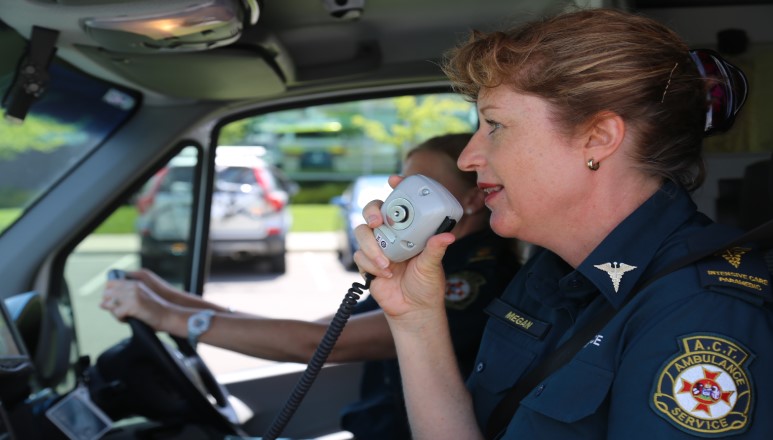Confidence in address data saves lives
G-NAF: 15 years of address data for our emergency services
When you call triple-zero, you want to know an emergency services vehicle can find you quickly. Accurate address data forms the backbone of the trust and confidence we place in our emergency services.
“When people call triple-zero, they’re usually having one of the worst days of their lives. With G-NAF, residents can have absolute faith that the information that helps us locate an individual’s address comes from an authoritative source,” explained Steve Forbes, Assistant Director Spatial Services at the ACT Emergency Services Agency (ESA).
“We know the validation process in building G-NAF is stringent, so we have a high confidence level. It’s one less worry for our crews and call takers.”
“When people call triple-zero, they’re usually having one of the worst days of their lives. With G-NAF, residents can have absolute faith that the information that helps us locate an individual’s address comes from an authoritative source,”
A long term relationship
Geoscape Australia’s G-NAF – Geocoded National Address File – has been an integral part of the ESA’s tech mapping since G-NAF was first created 15 years ago. “Back when the national address file was being built, ESA was about to release our new call-taker dispatch software,” said Steve. “We spoke to Geoscape about the address requirements for an emergency service and how it might work. They sent through the beta and we have never looked back.”
Since then, the ACT ESA has used G-NAF data with other localised information such as automatic fire alarms and points of interest data – combining them all for a complete picture of what’s at an address. The ACT ESA comprises ACT Ambulance Service, ACT Fire and Rescue Service, ACT Rural Fire Service, ACT State Emergency Service and ESA Support Services. Even though they’re focused on the ACT, given Canberra’s proximity to NSW towns such as Queanbeyan, they need to access location data beyond the ACT border.
“Our triple-zero call-takers take regional calls as well as the ACT, so we needed a dataset that encompasses more than the ACT,” explained Steve. “G-NAF is, and always has been, the primary product for our address gazetteer.”
G-NAF
Validated and trusted
“When someone’s having a heart attack, every second counts. Whatever we can do to speed up our response time, the better the outcome,” said Steve. “We use location information in our onboard computing system in our ambulances to help crews navigate to the exact address and enable them to locate the emergency situation. Underpinning these systems is G-NAF. Their faith in that address being correct is very high.” Staff confidence and community trust are vital for ensuring the ACT’s emergency management is of the highest standard.

“In emergency services, we love hearing someone’s built an address system with G-NAF as a base so there will be consistencies, particularly across state boundaries. The street will be correct, the suburb will be correct, and most importantly the latitude and longitude is going to be correct.”
G-NAF
Undergoing ongoing refinement
During 15 years of usage and 60 data update releases, G-NAF has evolved at a pace that aligns with business needs. Steve has seen firsthand how the process behind G-NAF’s data refinement has changed with advancements in technology and comprehensive user feedback from numerous sources.
“Validation from the contributors has changed over the years,” said Steve. “By making the dataset available to so many people, anomalies are exposed much more than they used to be. “When we find an address that’s not quite right, the fix is tighter than it was in the early days. Having said that, the data is less likely to have anomalies these days.”
Steve also notes that address data for new suburbs is validated much quicker, which again provides a level of assurance for ESA staff. “Years ago, if someone was to ring triple-zero and they’d be building a new house in a brand new suburb, we wouldn’t always know exactly where they were – now it’s a lot faster for those new addresses to be found.”
Steve acknowledges that without the work Geoscape does on G-NAF, they would require a specialist in-house to maintain the integrity of the data, which would require significant resources.
G-NAF
Widely used and respected data
“If someone is looking to build an address validation tool or address look-up tool for their own organisation, they can have high confidence in the accuracy of G-NAF,” said Steve. “And the good thing is G-NAF being freely available.”
While the ACT ESA’s spatial and digital services team has the capabilities to manage the quarterly updates and refine data to suit their requirements, others can access G-NAF via a partner for a customised solution. Geoscape also makes G-NAF publicly available under open data terms at data.gov.au.
